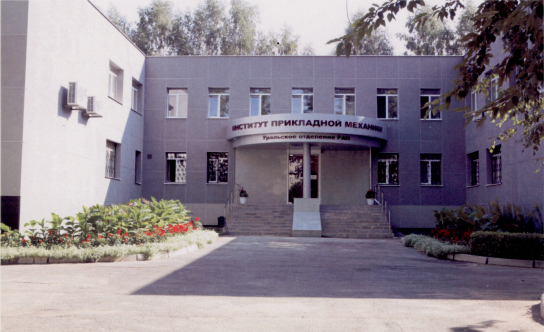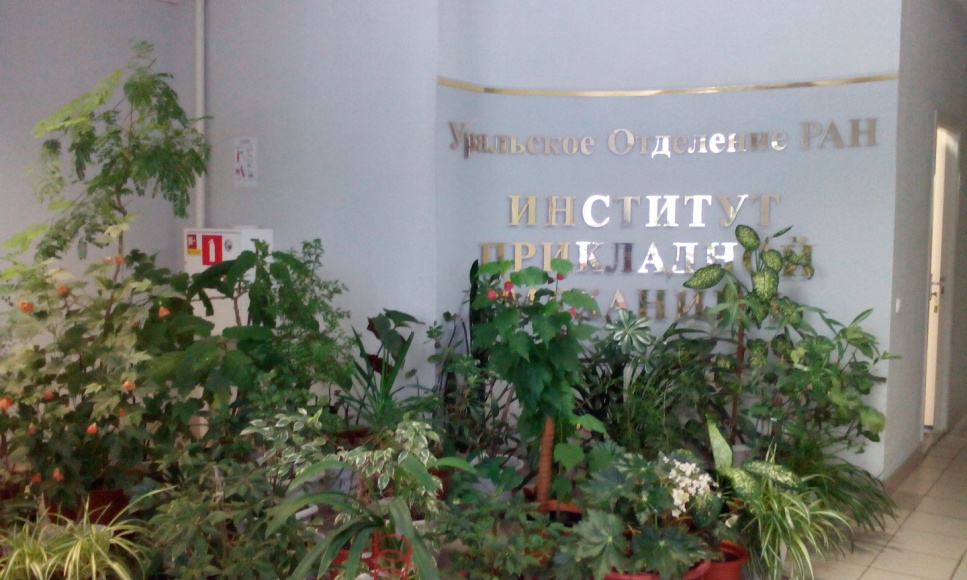«Institute of Mechanics» - structural unit of Federal State Budgetary Institution of Science «Udmurt Federal Research Center of Ural Branch of the Russian Academy of Sciences»
The Institute of Applied Mechanics Ural Branch of the Russian Academy of Sciences was established in 1991 in accordance with the decree of the Presidium of the Ural Branch of the USSR Academy of Sciences dated February 27, 1989, the decree of the Bureau of the Department of Mechanical Engineering, Mechanics and Control Processes of the USSR Academy of Sciences dated March 14, 1989, and the decree of the Presidium of the USSR Academy of Sciences dated 26 March 1991, on the basis of the Department of Applied Mechanics of the Institute of Mathematics and Mechanics of the Ural Branch of the USSR Academy of Sciences, laboratories of tribotechnology, topochemistry and wear-resistant coatings and the Strength Division of the Physical -Technical Institute of the Ural Branch the USSR Academy of Sciences.
The Decree of the Presidium of the Russian Academy of Sciences dated December 13, 2011 changed the type and name of the Institute from the Institution of the Russian Academy of Sciences Institute of Applied Mechanics of the Ural Branch of the Russian Academy of Sciences to the Federal State Budgetary Institution of Science Institute of Mechanics of the Ural Branch of the Russian Academy of Sciences.
On January 10, 2018, the Institute of Mechanics became part of the Federal State Budgetary Institution “Udmurt Federal Research Center of the Ural Branch of the Russian Academy of Sciences as a structural unit.
The scientific and methodological management of the Institute is carried out by the Department of Energy, Engineering, Mechanics and Control Processes of the RAS. In the Ural branch, the institute's activities are accountable to the Joint Scientific Council on Mathematics, Mechanics, and Computer Science.

The main directions of scientific activity of the Institute of Mechanics of the Ural Branch of the Russian Academy of Sciences:
physics and mechanics of heterogeneous media, including mechanics and physicochemistry of nanoscale systems;
problems of mechanics of a deformable solid and tribotechnology of materials;
new materials, devices and methods for their research.
The Institute includes the following departments:
1. Department of modeling and synthesis of technological structures
2. Laboratory of physico-chemical mechanics
3. Laboratory of laser research methods
4. Laboratory of information measuring systems.

The main studies are conducted in the study of:
processes occurring in the flow and detailed pictures of the evolution of vortex formation in channels with a sharp expansion, the unsteady three-dimensional Navier-Stokes equations for the turbulent region are numerically solved;
the theory of combustion of solid fuels, a model of physicochemical processes is developed that does not require a preliminary experimental determination of the dependence of the rate of burning of solid fuel on its arguments;
the development of abnormal physical and chemical processes in solid fuel pyrotechnic gas generators; a unique technology has been developed for dispersing mists, combating hail, weakening tornadoes, and other vortex formations in the atmosphere;
regularities of the processes of deformation of cured polymer composite materials and products made of them, stress-strain state and accumulation of damage under the influence of the environment, quasistatic thermomechanical loading;
the relationship of the deformation-force parameters of hot calibration by screw compression in the HTMO processes with the quality indicators of hardened products allowing predicting these indicators depending on the conditions of their operation;
in the creation of measuring devices working with objects of the nanometer range; a tunnel nanoscope has been created that has a sensitivity to mixing in the direction normal to the surface of the investigated object 0.04 A, working in vacuum, in air and in liquid;
heat treatment of martensitic aging steels into a martensitic-austenitic structure that provides a high level of mechanical properties, a technology has been created to produce a new material - a cast iron roofing sheet with high ductility and corrosion resistance.